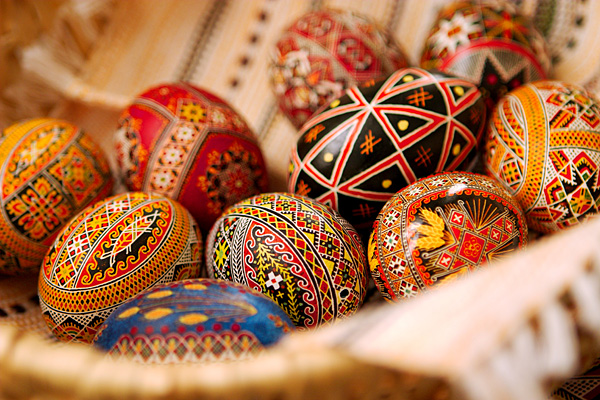Origins: Pysanka Wax-Resist (Batik) Art Technique
The ancient art form of making Pysanka or decorated eggs with intricate and beautiful geometric patterns, symbols and other traditional motifs is a practice originating in the Ukraine and other neighboring Slavic areas. The eggs were designed using a method called wax-resist or batik.

This technique involves using beeswax heated in a small bowl and then a stylus, a writing utensil or small tool used for shaping or even a pinhead was dipped into the wax.
Using a writing motion on an egg designs and patterns were created. Any part of the shell that was covered in the molten wax would be sealed and remain the color of the shell. The egg would then be dipped in yellow dye. Once the dye dried, more wax would be applied and then the process would continue with orange, red, purple and black dye. The color sequence for this method was always light to dark colors.
Once the egg was dyed the last color and dried completely, the wax would gently be removed by heating the egg and wiping off the melted wax revealing the beautiful and vibrant design underneath.
Many of the popular designs were of geometric figures or forms relating to nature such as triangles, floral, seeds, stars, spirals and curls. Modern artists use a variety of different design methods and motifs when creating pysanka such as using oil or water color paints. We see how some parts of this ancient art form has made its way into popular holiday related activities like the dyeing and decorating of Easter eggs!